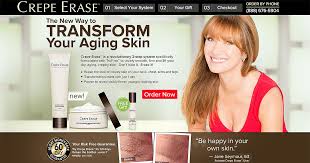Me, myself, and my breasts.
My relationship with my breasts has always been a
complicated one. There are times I absolutely love them. When they look good in
clothes, when they’re high and firm, when my cleavage is tasteful but still
sexy. Those are the times my breasts and I are friends, a happy little menage a
trois that gets me through the day.
But there are other times when I wish I could be as
flat-chested as a ham sandwich, if a ham sandwich could be flat-chested: during
puberty when my period was still trying to find the right timeline to come and
go; during pregnancy when they grew to twice the normal size and I had to buy a
specialty bra just so my back wouldn't break; to postpartum when they were so
swollen and engorged I wanted to stick a pin in them so they would burst and
relieve the pressure. Honestly, I could have breast fed a small, hungry army
instead of just one little red haired baby girl.
You'll notice that most of the "problems" I've
experienced have been during what could be called hormonal changes. Right
before, during, or just after your period your breasts may be tender to the
touch, feel swollen, and you may even experience some tingling that's not lust
induced. When you enter into peri-menopause, which is a cyclical time in your
hormone life, changes may also occur in your breasts. These changes will most
likely extend into menopause.
When your hormone levels drop, breast tissue becomes less
dense and more fatty, causing your breasts to look a little squiggly, more
jiggily, and even a little saggy. The one good thing about less dense breasts
is that radiologists are better able to spot changes on your yearly mammograms.
At least we get one good thing out of saggy breasts. And only one good thing.
In the absence of estrogen, the breasts begin to shrink
because the ducts and mammary glands shrink. This causes the breasts to lose
their shape and their firmness. We've all seen those cartoons of an aging Maxine in a floral house dress with her untethered
breasts hanging somewhere around her belly button and the tops of her thighs.
In a cartoon this looks funny. Not so much in real life.
During menopause some women will actually be lucky enough to
have their breasts shrink in size. Some other not so lucky ones will see an
increase in their cup size. Again, this is due to falling estrogen levels.
But now that I'm in full-blown menopause (FBM), the changes
I am noticing are subtle, but present, and need to be addressed. One thing that
should continue during menopause is the care and keeping up your breasts. You
should still perform monthly breast exams in the shower, and you should still
get your yearly mammograms unless your doctor tells you to get them more often
or not as frequently. Don't just assume because your mammogram was good this
year it'll be good next year. Sometimes changes can occur rapidly and they need
to be attended to.
There are some conditions that may occur in your breasts
that you should be aware of. None of these are life threatening, most of them
are just annoying. No one knows how your breasts "feel" better than
you do. You've been living with them all your life you should be able to notice
any changes.
Here are a few things worth knowing: (these are all
non-cancerous conditions, or what are called Benign Breast Changes)
Cysts:
the medical definition for this is a little sac that's filled with fluid. It
can feel like a lump, it can be very tender, and sometimes it can get bigger
and more painful before your period begins. Cysts are most common in women who
are premenopausal and who are taking hormone therapy. Most of the time they do
not need to be removed unless they're ridiculously painful and affecting your
life in a negative way.
Fibroadenomas:
these are smooth, hard, round-ish lumps that feel like marbles to the touch.
You can move them around easily with your fingers and they are usually
painless. Once again they routinely don't need to be removed and they’re more
common in younger women.
Intra-ductal
papillomas: when looked at under x-ray or mammography these little
growths look like warts and they usually occur in the milk ducts. They can be
found pretty close to the nipples and may even secrete some kind of discharge.
Sometimes they can be painful and they’re most common in women in the
perimenopausal years.
The Bible says “Know thyself.” I say “Know thy Breasts.” You are their best friend and their
first investigator/supporter. You can discover trouble spots and find anything
that seems hinky or out of the norm.
Be your breasts’s advocate. During menopause and throughout
your life. Tell this to your daughters, nieces, friends, sisters and mothers.
And any other female you can think of. It’s important, and not only during
menopause.




Comments
Post a Comment
Share your story!